【Abstract】The implementation of wire rope online monitoring network system will improve the management level of equipment in Jinchuan Group Company as a whole, ensure the safe operation of wire rope, and fully tap the potential for improvement.
【keyword】 Overview of wire rope monitoring safety, reliability and economic efficiency network
As an important component of mine lifting equipment, wire rope is very important to safety production and production efficiency of the company.
For a long time, the management of wire rope has been in an embarrassing situation of "attention but no effective method", and has to use manual visual inspection, caliper measurement, experience, feeling and other methods to change the rope, there are "unreliable, unsafe, uneconomic, low efficiency" and other four major problems. It is urgent to use advanced management and technical means to strengthen the detection, bearing capacity assessment and safety management of steel wire rope, improve the management level of equipment in the second mining area as a whole, and ensure the safe operation of steel wire rope.
1.The necessity of implementing the project
TCK.W wire rope remote network measurement and control system is currently the most advanced wire rope real-time monitoring system, the system with weak magnetic detection technology as the core, combined with modern network communication technology, to achieve real-time monitoring of online wire rope.
The second mining area demonstrates the feasibility and necessity of TCK.W wire rope remote network measurement and control system in mine lifting. The wire rope remote network measurement and control system will be able to::
(1)The highly sensitive detection device is fixed in the appropriate position of the hoist, and connected to the central master station through wired or wireless communication to realize real-time monitoring of the wire rope;
(2)The central control station can monitor all the damage and residual load of the monitored wire rope in real time, and give corresponding treatment measures and suggestions;
(3)The monitoring scope includes the wire rope of the main and auxiliary Wells in the second mining area。
2.Current situation of wire rope management in the second mine
The management of steel wire rope in the second mining area is of great importance to the safety and production efficiency of the whole company, and the company has always attached great importance to its management. However, for a long time, for the health of the wire rope, whether there is major damage, how the remaining carrying capacity, can continue to use the judgment, there has been a lack of appropriate detection equipment and scientific control means, the management of the wire rope has also remained in the basic rely on manual experience of the backward mode of judgment, the use of manual visual inspection, caliper measurement, by feeling rope change and other methods.
Actually. As early as many years ago, the technical personnel of the second mining area and even the relevant departments of the company have been looking for relevant detection instruments or solutions, and in recent years, this effort has not stopped. However, due to the maturity of the wire rope testing technology itself, there has been no way to find a wire rope testing product that can meet the actual testing needs, so the management of wire rope has continued the practice of the past few decades - a manual test and regular rope change.
2.1 Wire rope mainly adopts manual detection method
(1)Visual inspection:During the inspection, the rope inspection speed of 0.3-0.5m/s is driven, and the inspection personnel inspect the wire rope to observe whether the surface of the wire rope is obviously broken, wear, rust, necking, etc., if there is an abnormal stop for detailed inspection;;
(2)Caliper necking:The diameter of the wire rope is measured with a caliper to ensure that the necking is within the specified range. Manual inspection is divided into the following categories:
①Class check. According to the relevant regulations of Jinchuan Company's special equipment, each shift must check the main lifting wire rope (12 hours for one shift). During the inspection. The driving speed is generally 0.3-0.5m/s. Drive a back and forth, the detection personnel choose a suitable observation point to observe the main lifting wire rope, if found abnormal surface damage, then stop for inspection. Class inspection is generally only for the main lifting rope inspection, tank rope, tail rope, etc., too late to detect, can only be placed in the weekly inspection. In actual production, due to the heavy task, it is usually necessary to sacrifice the time to check the wire rope to ensure the production time.
②Weekly check. Once a week. It is required to carry out a more detailed inspection of all lifting ropes, tank path ropes and tail ropes; The first rope inspection method is basically the same as the shift inspection. At least two inspectors are required to stand on the lifting container during the inspection of the tank passage rope, and observe whether there is any abnormality in the tank passage rope during the operation of the elevator. In addition, the tail rope also needs to be checked. In actual operation, because the lifting area of the main shaft of the second mine is usually stopped for inspection and maintenance for less than 4 hours a day, the time is far from enough to check all the wire ropes, so it is generally the use of several weeks of inspection time to check different wire ropes, that is, the main inspection tank rope this week. Next week we'll be checking the tail rope and so on.
③Monthly check. Conduct a thorough inspection of various types of wire rope every month, and make inspection records as the basis for rope replacement. Due to the limitations and uncertainties of manual inspection, in order to ensure the safety of the wire rope, it is only possible to adopt the practice of "sacrificing cost for safety" and regularly replace the wire rope. That is to say. As long as it is a certain time, no matter how the wire rope is used. They basically have to be replaced. The rope replacement cycle is roughly as follows: the first rope of the main well: raise 6 million t for about 2 years; Main well tank rope: change rope about 2-3 years; Main well tail rope: about 3 years to change the rope.
In addition, if the wire rope is found to be significantly broken or other damage during the rope cycle, the wire rope is generally replaced immediately for safety reasons.
2.2 Problems in regular rope change management
In recent years, with the implementation of the concept of "building a digital mine" in the second mining area. Many major equipment monitoring and management has introduced a lot of advanced management methods and means, but only the management of wire rope, can be said to be decades of system, without any change. In this backward wire rope management mode, the four major problems of wire rope management such as "unreliable, unsafe, inefficient and uneconomic" have not been solved.
2.2.l One problem: Unreliability
Manual detection is extremely unreliable for the detection of various injuries for several main reasons:
Discontinuity: When the manual visual inspection of the wire rope is conducted, the eyes of the witness cannot be guaranteed to not leave the wire rope for a moment. In fact, when the pressure of the production task can only be symbolically carried out at a speed of 2-3m /s (much higher than the stipulated inspection speed of 0.3-5m /s), this manual visual inspection is more "fleeting", the effect can be imagined. The inspection of tank line and tail line is the same, and the visibility at the bottom of the hole is very poor, so the reliability of manual visual inspection is greatly reduced;
Incomplete: Limited by the line of sight of the eyes, only one side of the line of sight can be observed, and the other side cannot be seen;
Environment, light and other effects: in many cases, the visual light is very poor, and some detection positions can only be far away from the person, by light detection (such as the tail rope in the discovery of the problem after the wire hook to the front observation), so the visual limitation is great.
In addition, even if the speed of detection is completely in accordance with 0.3-0.5m/s, the detection personnel are very serious, the light is very good, and the manual detection method can only partially cause obvious damage to the outside of the wire rope, and the internal wear, rust, and broken wire of the wire rope. In particular, damage such as fatigue is not detectable.
According to the summary of long-term work and relevant data show that the main damage in the use of wire rope includes the following categories, and the damage types that can be detected by manual detection only account for about 20%, and the effectiveness of manual detection is analyzed as shown in Table l.
It is an analysis diagram of whether the above various types of manual detection can be found.
From the above analysis, it can be seen that most of the damage can not be found by manual visual inspection, caliper measurement and other methods. In fact, among the various damages that affect the bearing capacity of the wire rope, the invisible internal damage has a greater impact than the external damage.
Usually, when the internal damage occurs, the exterior may not be able to show it, and when the exterior can show it, the interior may already be very serious. According to an expert of the former Soviet Union, when the outer wire of the wire rope is broken, the broken wire that is not found inside is generally 2.5 times that can be seen outside.
In addition, all the fatigue is invisible to the naked eye, but the harm of fatigue is precisely one of the most harmful to the wire rope. As a simple example, if a piece of wire is bent l00 times, it will break when it is bent 99 times. The appearance of the wire does not show obvious abnormalities, but in fact, its carrying capacity has been basically lost at this time, and as long as a slight bending force is given, it will break. The steel wire rope in the working process, long-term withstand a variety of bending fatigue, tensile fatigue, etc., fatigue on the steel wire rope and just in this example is the same. However, manual inspection cannot detect fatigue at all, that is to say, the daily routine manual inspection of the second mining area has no insight into the biggest factor threatening the safety of the wire rope.
2.2.2 Problem No. 2: Insecurity
To sum up, the current manual inspection party is extremely unreliable for ensuring the safe operation of the wire rope, so there are actually many major accident hidden dangers in production.
According to the research and analysis of 8000 steel wire rope laboratories and application field statistics in the United States, the conclusion is that more than 12% of the steel wire rope in use is in a "dangerous or extremely dangerous" state, that is, the strength loss of l0% exceeds l5%, in a dangerous state, and another 2% of the strength loss of the steel wire rope in use exceeds 30%, in an extremely dangerous state.
According to the State Administration of Work safety released in 2005, 2004, 2003 national coal safety situation comprehensive analysis data: in 2005, there were 509 coal transportation accidents in coal mines, 559 people died; In 2004, there were 556 coal transportation and lifting accidents in coal mines, killing 583 people. In 2003, only from May to May, the national coal system due to wire rope problems caused by heavy and extremely serious accidents as many as 215, 223 people died, of which the death toll is the largest number of Shanxi Luliang Jiaocheng County Wuqi coal mine broken rope accident, a death of 14 people, seriously injured 5 people.
In recent years, there have also been rope breakage accidents or attempted accidents in the second mining area. In April 2004, the tail rope of l# machine 2# in the lifting area of auxiliary shaft was broken.
On the other hand, the steel wire rope in the manufacturing, transportation and other links also have the possibility of carrying capacity damage, so the "new" steel wire rope is not equal to the "good" steel wire rope. However, due to the lack of means to test the situation of the new wire rope, even if the use of regular rope change, it can not fully ensure the safe operation of the wire rope.
Due to the limitations of the manufacturing process, materials, etc., the steel wire rope itself allows a certain range of non-uniformity. The national standard for steel wire rope manufacturing stipulates that the effective metal bearing area of the steel wire rope is allowed to 5% error when it leaves the factory, and the uneven bearing technology area itself will bring about the uneven bearing capacity. In addition, the steel wire rope in transportation, storage and other links also exist corrosion, accidental trauma and other possibilities to affect the bearing capacity of the steel wire rope, the use of the steel wire rope is complex, there are often uneven bearing, impact bearing and other situations. In particular, the imported rope used in the second mining area, due to ordering and transportation reasons, the storage period of the wire rope from the factory to the use is generally more than one year or even two years, and the storage period of the wire rope is usually not more than half a year. Replacing the so-called "new" rope that has been stored for more than one year or two years is actually an "old rope" that has corrosion, aging and other damage.
Therefore, even if the wire rope is replaced regularly or quantitatively according to the regulations, it is impossible to fully ensure the safety of the use of the wire rope! Many wire ropes have not yet reached the replacement period, and have already broken the rope accident. According to the incomplete statistics of the book "Detection and Accident Case Analysis of Mining Steel Wire Rope" (1999, Coal Industry Press), there were as many as l7 new rope breakage accidents in the coal system in Henan Province alone. . Once the rope breaks the rope accident, it will inevitably lead to major harm, light will destroy the machine, heavy will die.
Jinchuan company in April 2004 auxiliary shaft lifting area of 1# machine 2# tail rope broken accident as an example, after the accident stopped production for 2 days for equipment repair and mine repair, direct economic loss of more than l0 million, fortunately, at that time just checked the 1# elevator for trial operation, there is no tank crew, and after the tail rope broke the fall into the well did not cause damage to other facilities. So it's only been shut down for two days.
However, whether it is hundreds of thousands, or millions, these economic losses can be measured by numbers, and once there are casualties, the accident to the victims of the family damage is immeasurable, with how much money can not make up!
2.2.3 Problem No. 3: Inefficiency
The manual inspection method is inefficient and wastes a lot of production time. Taking the "shift inspection" of the second mining area as an example, the normal "shift inspection" of the lifting container is generally 0.3-0.5m/s, if the main lifting wire rope is checked once per shift, it takes 20 minutes, two shifts a day, and more than 300 hours of valuable production time will be wasted a year. Based on current 800t/h in the main well. In one year, 240,000 tons of production capacity was lost, accounting for about 6% of the current total production capacity. The above estimates are only calculated "class inspection", if the "weekly inspection" and "monthly inspection" are calculated, the loss of efficiency is even more astonishing.
More importantly, in order to achieve the Jinchuan company's 2010 production capacity to reach L10 million tons of five-year strategic planning, the second mine next year planned tasks of 3.45 million tons, the goal of 3.63 million tons, the next year will be 4.2 million tons of production tasks, the ability to improve is precisely to determine whether the second mine can complete the company's production indicators in the next two years. Only by further tapping the improvement potential and breaking through the current improvement bottleneck can we complete the production targets issued by the company. To improve the detection efficiency, shorten the detection time, and increase the effective upgrading time is an important aspect of tapping the upgrading potential and optimizing the upgrading time. In this respect. At present, the low efficiency of manual inspection greatly hinders the exploitation of improvement potential.
2.2.4 Problem No. 4: Uneconomic
Because the detection technology and detection methods can not meet the actual needs, in order to avoid wire rope accidents, has always been to take the "sacrifice cost in exchange for safety" way, that is, regularly change the rope. However, this practice has directly led to the increase of the cost of wire rope.
For the steel wire rope that is forced to be replaced, according to relevant research statistics, a large number of them are wasted. The statistical results of Japan show that the steel wire rope is forcibly replaced. More than half of the strength reaches more than 90% of the strength of the new rope, and many more than 100%, that is, it is still in the running-in period. Surveys in the United States have found that about 70% of wire ropes that are forcibly replaced have little or no strength loss.
The former national Ministry of Coal has carried out statistics on the use of mining steel wire rope, and the conclusion is that if the use of instruments to monitor the status of steel wire rope, and proper maintenance, at least 12% to 20% of the amount of steel wire rope can be saved every year, and the foreign exchange of imported steel wire rope can be saved by 20% to 30%.
As far as the actual situation of Jinchuan Company is concerned, the cost statistics of each rope change are shown in Table 2.
In addition, "uneconomic" is also reflected in the increase of various other costs caused by inefficient manual testing, such as labor, power consumption and other material losses during the testing process. Power consumption only: average well depth 600m; Hoist power consumption of main and auxiliary Wells total 5500 kw; Check rope speed 0.3m/s; A round trip takes 66 minutes; Check a rope power consumption of about 6 000 kwh; The price of each kwh of industrial electricity is 0.6 yuan; Check the power consumption cost: 3 600 yuan; The annual testing accumulated power consumption cost of more than 2 million yuan.
All in all, in the management of wire rope, Jinchuan company has always been "unreliable, unsafe, uneconomic, low efficiency" and other four major problems, it is urgent to use advanced management means to strengthen the detection of wire rope, bearing capacity assessment, safety management and other work, from the whole improve Jinchuan company to improve the management level of equipment, ensure the safe operation of wire rope, fully tap the potential for improvement. This is precisely the necessity of the implementation of this project.
3. The significance of implementing the project
In order to improve the management level of wire rope in Jinchuan company, optimize and improve efficiency, and overcome the four major problems in the above wire rope management, by demonstrating the feasibility of the implementation of wire rope online remote network measurement and control system in the second mine, the implementation of the system will have the following positive significance.
3.1 Replace backward management methods with advanced management methods. Promote the pace of building digital mines
The use of wire rope real-time online monitoring system, will completely replace the continuation of decades of backward management. In the management mode, change "qualitative management" to "quantitative management"; In the detection time, the "shutdown detection" is changed to "online monitoring"; In the improvement of efficiency, change "miss work time" to "save time and increase production"; In the detection mode, the "manual detection" is changed to "real-time monitoring"; In the security, change "nervous" to "safe and reliable"; In the basis of rope change, the "empirical estimation" is changed to "scientific judgment"; In terms of cost control, change "a lot of waste" to "full use".
In short, in all aspects, will greatly improve the company's safety management level, so that Jinchuan company toward the "construction of digital mine" the goal of a big step forward.
3.2 Improve the detection efficiency and tap the improvement potential. It fully embodies the concept innovation of management to benefit and management to reduce consumption
Optimize the promotion time and tap the promotion potential. The implementation of the system will replace the current "shutdown manual detection" with "non-stop implementation monitoring", greatly saving the detection time for production, so as to achieve the purpose of optimizing the time, tapping the potential for improvement, overcoming the bottleneck of improvement capacity, and bringing huge economic benefits to the Group company. It also lays the foundation for the realization of the Group's five-year plan of 10 million tons of production capacity in 2010. The implementation of this system, even if only save l / 2 detection time (in theory can save all wire rope inspection time), will be at least 250 to 375 hours per year to increase the increase in production capacity of 200,000-300,000 t. Improve personnel efficiency.
The implementation of this system will replace manual inspection labor with automatic monitoring of the system, thus liberating a large number of human resources engaged in wire rope testing and alleviating the shortage of human resources. The company will use these liberated human resources for direct production, which will save labor costs on the whole and improve personnel efficiency. Reduce the waste of blind rope change and save costs. The implementation of this system will enable managers to scientifically and objectively evaluate the bearing capacity and remaining life of the monitored wire rope, reasonably master the rope changing time, avoid blindly changing the rope when the wire rope still has enough carrying capacity, extend the service life of the wire rope, and save the use cost of the wire rope.
All in all, in the management of wire rope, Jinchuan company has always been "unreliable, unsafe, uneconomic, low efficiency" and other four major problems, it is urgent to use advanced management means to strengthen the detection of wire rope, bearing capacity assessment, safety management and other work, from the whole improve Jinchuan company to improve the management level of equipment, ensure the safe operation of wire rope, fully tap the potential for improvement. This is precisely the necessity of the implementation of this project.
4 . Peroration
The implementation of wire rope online monitoring guillotine system will solve the problems of "reliability", "safety", "economy" and "efficiency", and reduce the hidden dangers of wire rope accidents.
Reference
l "Mine Steel Wire Rope Detection and Accident Case Analysis", (1999, Coal Industry Press)
22 "On-line lossless quantitative Methods and judgment rules of Wire rope (cable)". MT/T970-2005
The application of TCK.W wire rope detection technology in academic journals
Editor's note: TCK.W has developed a weak magnetic rope detection technology that can real-time monitor the status of steel ropes 24 hours a day, 365 days a year, and locate, classify, and quantitatively identify various internal and external defects. Currently, more than 2,500 clients in 42 countries worldwide are using this technology. These clients have published papers on the safety and economic benefits brought about by this new technology in various academic journals. Here is a compilation of some of these papers for experts and scholars to explore and study in depth.。
论文名称
作者单位

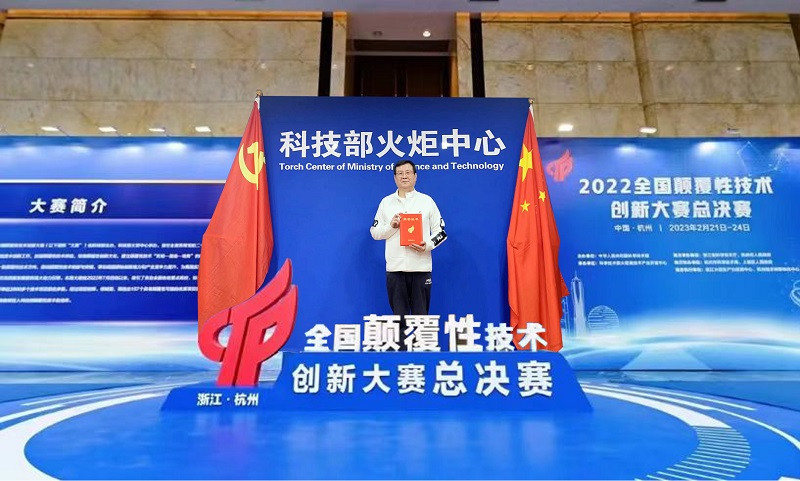

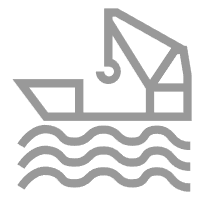
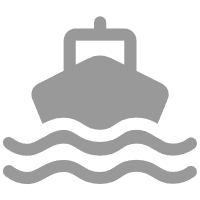
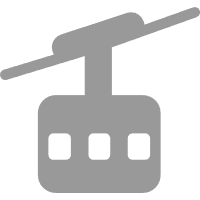
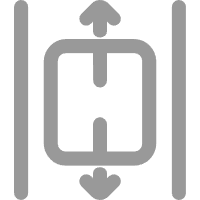
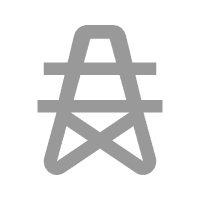



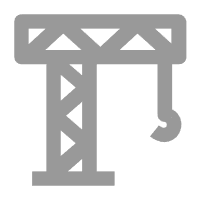

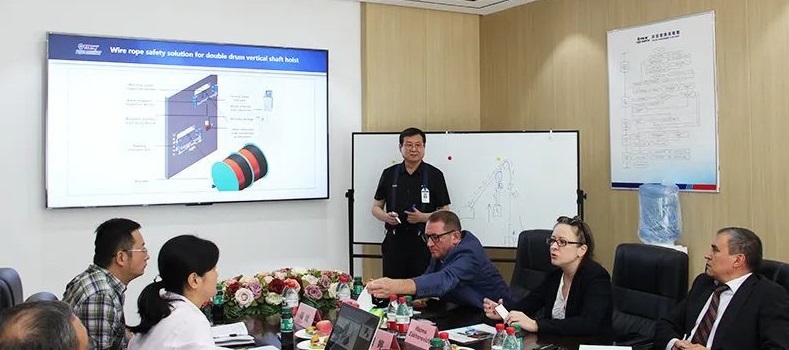
 发表期刊:Jinchuan
发表期刊:Jinchuan
